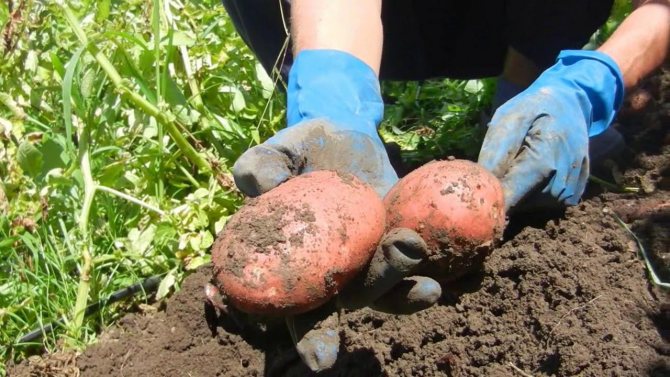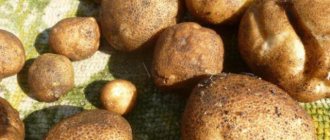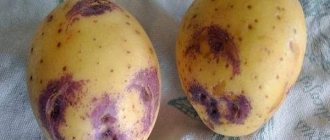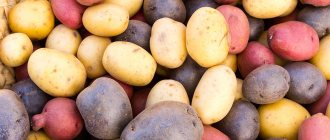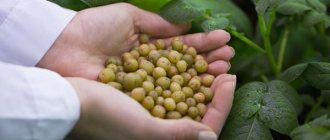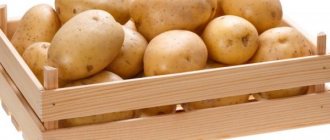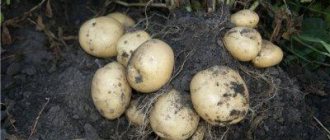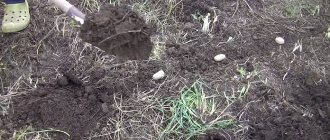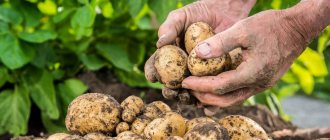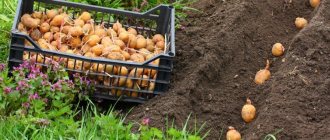Description of the variety, its origin and growth characteristics
Bellarosa comes from Germany and was developed by German specialists at the beginning of the third millennium. Also his name is Cherry or Europlant Pflanzenzucht GMBH.
When the Bellarose variety ripens
This variety belongs to the category of early ripening potatoes, the first tubers appear within a couple of months after planting, and the digging begins in just 40 days. The consistently high-yielding Bellarosa potato can yield several tens of tons of fruit per hectare.
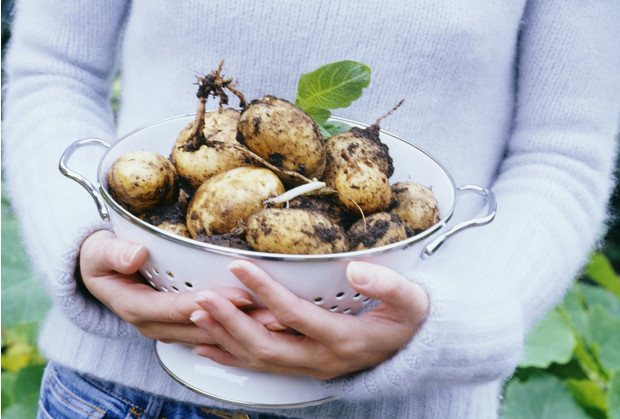
Freshly Harvested Bellarosa Potatoes
Interesting! Growing in more fertile southern conditions, this potato ripens twice in a single season. Summer residents in the south collect this variety in bags in the first days of July and September.
Disease resistance
Skilled gardeners respect this type of potato for its resistance to the most common diseases among this crop, among which the most distinguished are:
- rhizoctonia;
- verticillosis;
- scab;
- spotting;
- bacterial decay;
- black leg;
- viruses;
- potato cancer.
- fusarium.
According to some reports, Bellarosa is not susceptible to infection even by the cyst-forming golden nematode.
What does a plant and its fruits look like?
White rose is a potato that grows with strong stems, gaining a maximum height of 75 cm and releasing voluminous leaves of a closed shape, slightly wavy at the edges. When the time comes for flowering, the potato bushes are slightly decorated with purple-red medium-sized flowers.
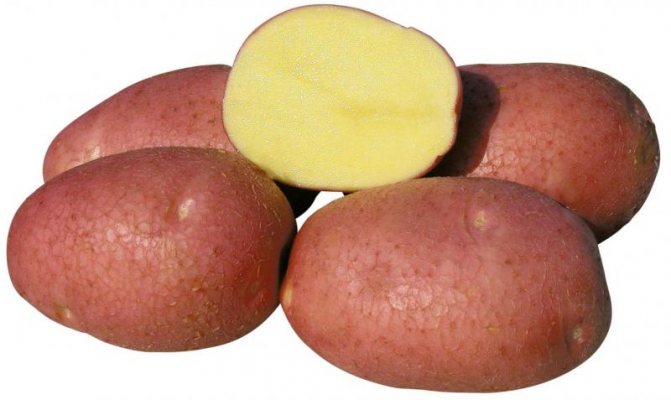

The Bellarosa variety has an exemplary appetizing appearance.
One bush can give up to a dozen large roundish fruits with a mass fluctuating around 100-200 g. There are also exceptions, whose weight is about 800 g. The tubers themselves have a light pink or reddish color and small superficial eyes.
Additional Information! The thick rough skin of this species protects the fruits from destruction, but inside they are painted in cream and pale yellow tones.
Where are Bellarosa potatoes grown?
For the first time, Eastern European territories were identified for cultivation, but due to its adaptability, the new type of potato soon spread throughout the surrounding area and beyond. It is widespread in Moldova and Ukraine. In Russia, Bellarose potatoes are especially popular in the Urals, as well as in the northwestern, central and southern regions.
Taste qualities
The starch content in this variety ranges from 12 to 16%, it has a special sweetish taste and is suitable for both frying and cooking, having the ability to serve as an ingredient or side dish for any dish. After exposure to temperatures during cooking, it has an average level of friability.
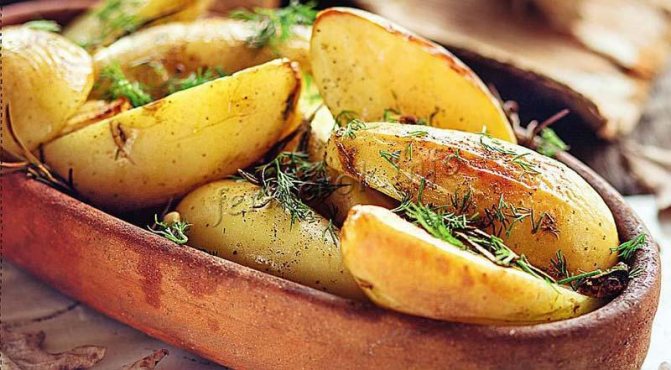

Gourmets will appreciate the dishes from the White Rose
Note! Bella rossa is a potato that stands out from all other varieties by maintaining the brightness of the color shade during the cooking process.
Correct fit
How to properly plant seed:
- Be sure to carry out pre-planting germination of tubers, and also pickle from rhizoctonia;
- Prepared seed is allowed to be planted early. Non-germinated tubers are planted only in the soil warmed up to 8 ° C;
- To obtain large tubers, the distance between the bushes should be 30 cm, the row spacing should be at least 75 cm.
REFERENCE: When planting too large tubers, it is allowed to plant them in a cut form; at least one or two eyes should remain on the half.
The main advantages and disadvantages of the variety
Bela rosa potatoes have a positive characteristic not only for their fertility, the rate of tuber formation and their taste. It is highly regarded by farmers and gardeners for a number of other positive properties.
Dignity
Undemanding care and resistance to dry periods do not deny the need to comply with the rules for growing the variety, but open it up for farmers and other busy gardeners who can afford to care for the site only on weekends.
In the climatic areas of the middle zone, the White Rose potato can be planted on colossal territories without automatic irrigation equipment. It accepts most types of soil, not counting soils with a particularly dense composition. The strong skin guarantees the safety of the fruits both during their growth and during long-term storage.
disadvantages
However, with all these benefits, the plant is vulnerable to the most common garden pests such as wireworm, potato ladybug, Colorado beetle and ground beetle. Also, despite its resistance to many diseases, with an excess of moisture, Belarossa potatoes are susceptible to late blight.
Additional Information! This variety does not tolerate a lack of lighting, which directly affects the size of future tubers.
Rules for the care of the Bellarosa variety
This variety, undemanding to care, first of all needs care for the root area of the soil. Also, special attention in growing potatoes should be paid to feeding it.
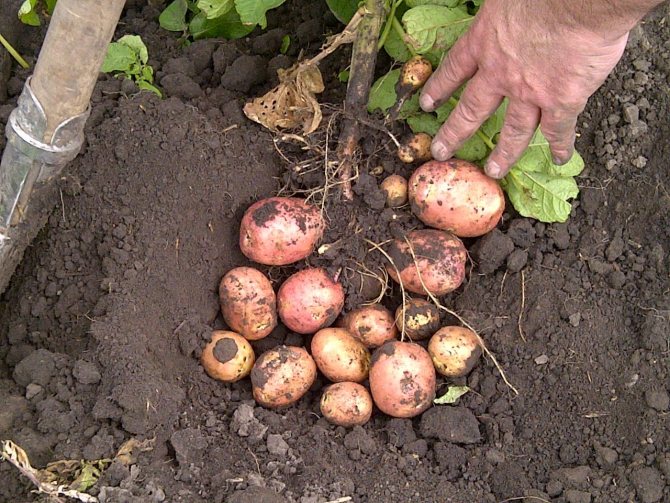

With proper care, the White Rose will bear fruit well regardless of the composition of the soil
Watering features
Highly resistant to drought, Bellarosa practically does not need watering, it gets by with natural precipitation. This variety is distinguished by the fact that it can exist for a long time without water at all.
Important! Mulching will be required to prevent weeds.
Top dressing and fertilization
Most early ripening potato species need fertilization, this is especially true when grown in soil with a high sand content. Bellarosa is no exception. Dolomite flour is used to enrich the soil.
Depending on what stage of development the plant is at, there are three stages of fertilizing. When the bush is just beginning to emerge from the ground, it is fertilized with chicken droppings or manure infusion. On the eve of the flowering time, the plants are fed with diluted ash and potassium sulfate. When this period is in full swing, a combination of superphosphate and mullein is used.
Important! Feeding the bushes must be preceded by a significant level of precipitation or abundant watering. When fertilizing in dry soil, the root system of the potato can be damaged.
Hilling and weeding
Strong stagnation of the soil around the bushes should not be allowed. In the absence of timely loosening, the access of the roots to oxygen and moisture will be limited. In addition, soil compaction contributes to the spread of weeds that love the neighborhood of potatoes. The peak of loosening is in the first half of the season. For the first time, the soil is loosened a week after planting and repeated after about the same time. It is recommended to arrange the third loosening when sprouts appear on the surface.
Why doesn't it bloom?
If the plant is affected by some kind of disease, it becomes weak and stops blooming.But this does not apply to Bellarose, since the variety is ultra-early. The crop ripens when Colorado beetles and other pests have not yet appeared. The plant simply did not have time to bloom. The quality and quantity of tubers practically does not suffer from this.
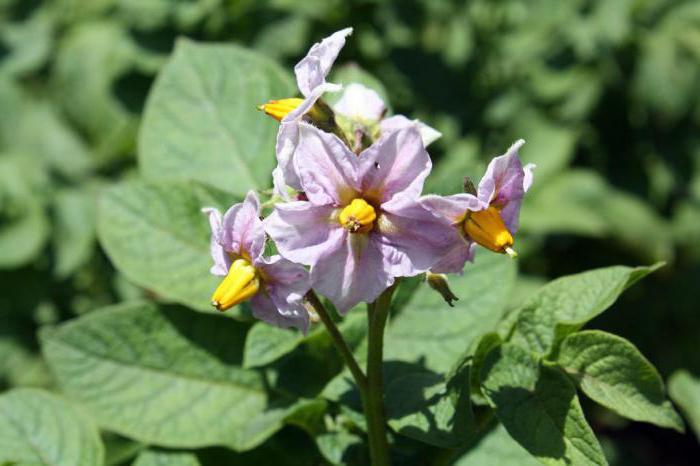

Bellarosa potato sheds flowers if the environment is at an elevated temperature, that is, more than 22 ° C. The reason for the absence of buds on the plant may be an invasion of ground beetles or ladybugs that have eaten them.
How to harvest and store crops
In order for the harvested tubers to remain intact, they must meet certain criteria. Non-moist, healthy fruits, cleared of sprouts and earth cover, are deposited for storage.
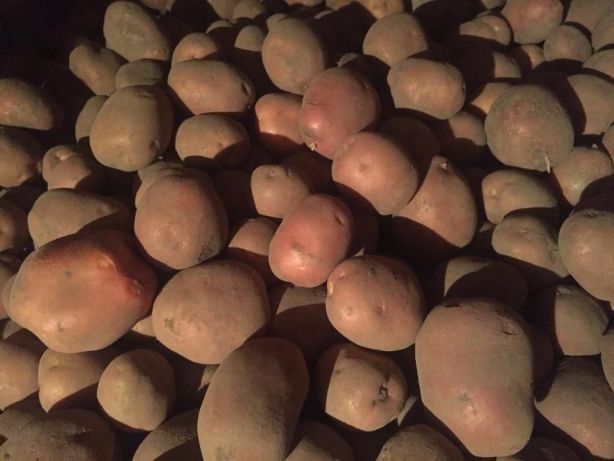

The selection of suitable tubers affects the safety of the entire stock
In addition to its own short-term preservation, tubers infected with various types of rot and fungus can also destroy the remaining reserves. Frozen, squashed and severely damaged potatoes are also not recommended for laying.
During storage, small breaks in the peel are overgrown, it protects the inner layer from microorganisms. This occurs most intensively in the first month after harvesting at an air humidity of approximately 90-95% and a total temperature of 12 to 18 ° C. It is recommended to lower the humidity later.
The optimum storage temperature for potatoes is 2 to 4 ° C. Proponents of these values explain their advantage by the fact that this temperature is closest to that required for germination and vital activity of tubers. While common lower 0 and 1 ° C, according to their description, can cause hollowness and darkening. At temperatures above 4 ° C, the fruits begin to sprout.
If in the mass of potatoes, for some reason, unsuitable selection criteria, diseased or defective tubers are widespread, they are selected. The rest, in order to prevent the spread of infections, should be stored at temperatures ranging from 1 to 2 ° C.
Features of storage and keeping quality of the Bellarosa variety
Bellarose potatoes, despite the short ripening period, have high values of keeping quality. They range from 93 to 96%. Tubers spoiled during storage usually make up no more than 6% of the total. The conditions necessary for this do not differ from the requirements for other species. According to the reviews of gardeners, the taste of the variety only improves during its storage.
Note! Bellarosa has not only a high safety factor. Subject to proper growing conditions, its marketability can be up to 99%.
The specifics of growing potatoes
Growing tasty Belarossa potatoes begins with choosing a suitable site, preparing seed tubers, following tips and recommendations for planting.
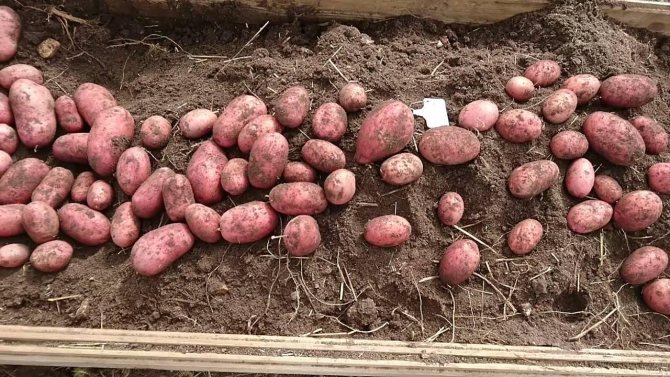

How to prepare the plot and seed potatoes
The culture bears fruit well on any soils, except clay, but it is preferable to prepare drained loose soil for planting. Choose an open, sunny, elevated area after growing any crops other than nightshade. Potatoes, tomatoes, eggplants, peppers give consistently large yields for no more than two years in one place.
Soil preparation begins with the autumn digging on a shovel bayonet with the simultaneous introduction of compost, humus or manure in an amount of up to 8 kg per 1 sq. m.
In the spring, the soil is dug up again. Mineral fertilizers are applied with an emphasis on nitrogen, or ash at the rate of 200 g per 1 sq. m. A month before planting, the tubers are transferred from the storage place to a warm sunny room, sorted out, rejecting specimens that have not survived the winter. Further, the potatoes are treated in a manganese solution, dried, sprinkled in one layer. A suitable temperature for sprouting is 15-18 ° C.
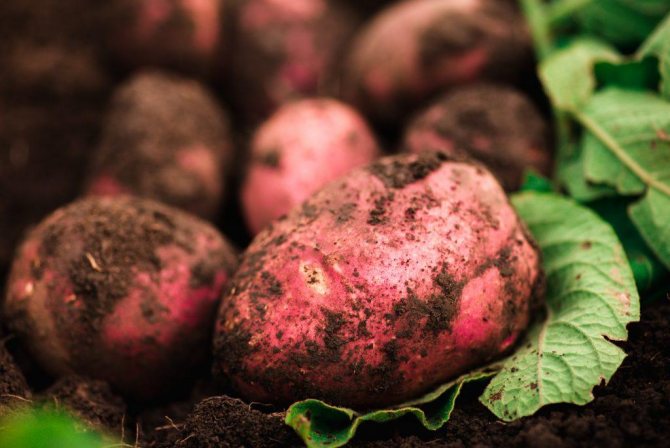

It is not recommended to sprout tubers in boxes.Lack of lighting, insufficient air circulation in the lower layers of tubers lead to spoilage of the planting material, the appearance of thin, not viable sprouts.
See also
Description and characteristics of the Labella potato variety, planting rules and care
To read
Immediately before planting in the soil, weak, shriveled tubers are soaked in Zircon solution for at least 6 hours. The drug stimulates growth and normal development of culture.
Planting process
For the cultivation of Bellarosa potatoes, whole tubers or parts thereof with eyes are used. I begin to carry out agrotechnical measures when the soil temperature is stable at a level not lower than 8 ° C.
In order for the bushes to be illuminated and warmed up evenly throughout the daylight hours, it is recommended to direct the rows from north to south. The distance between the holes is kept 30–40 cm, between the rows - 70–90 cm, the embedding depth is 8–10 cm. To obtain even, neat rows, markings are used - two pegs are stuck along the edges of the beds, with a stretched rope.
